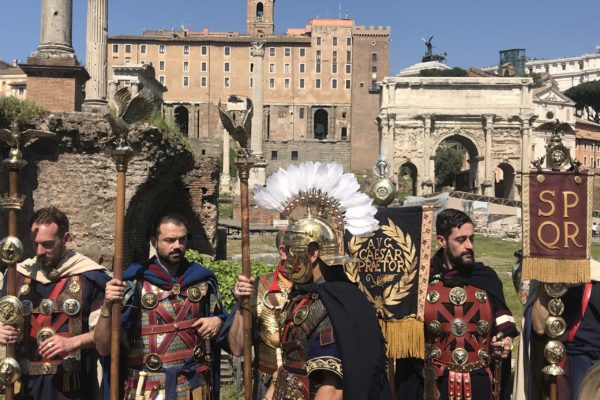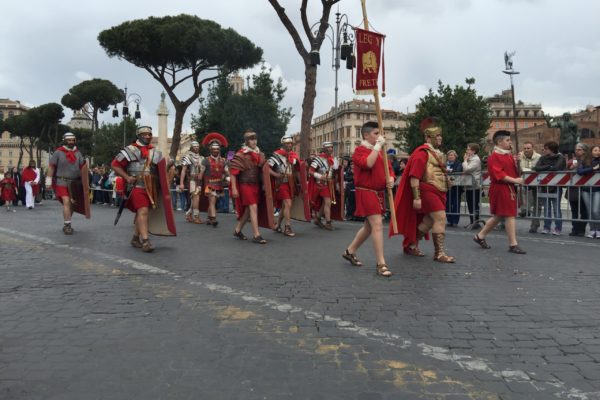In ancient Roman mythology, the city of Rome is said to have been established by Romulus on April 21st in 753 BC. The myth revolves around Romulus and his twin brother Remus, who were abandoned and raised by a she-wolf. When they reached adulthood, they decided to establish a city along the banks of the Tiber River. However, a disagreement over the city’s name led to Romulus killing Remus. Romulus subsequently became the first ruler of Rome, and the city was named after him.
The celebration of Rome’s birthday holds great significance for the city’s cultural identity and its rich historical heritage. It serves as a focal point that brings together both locals and tourists, providing an opportunity to reflect on Rome’s past and recognize its contributions to various fields such as art, architecture, governance, and civilization.
On April 21st, Rome bursts into vibrant life with a diverse array of public festivities and events. These include elaborate parades, theatrical performances, and exhibitions that showcase artifacts from ancient Rome. The city’s main squares and streets are adorned with decorations, and the atmosphere is filled with traditional Roman music. Furthermore, citizens and visitors alike gather at historically significant sites like the Roman Forum, the Colosseum, and the Palatine Hill to pay homage to the founding of Rome.
Beyond the secular celebrations, Rome’s birthday also carries religious significance. The city’s patron deities, Romulus and Remus, are remembered and honored during this time. Religious ceremonies take place at temples and shrines dedicated to these mythical figures, where participants offer prayers, make offerings, and engage in rituals to seek blessings and protection for the city and its inhabitants.
Academic research has extensively explored Rome’s birthday and its historical origins. Ancient Roman texts, such as Livy’s “History of Rome,” provide valuable insights into the mythology surrounding the city’s foundation. Additionally, archaeological excavations and historical analyses have shed light on the ancient Roman civilization, enhancing our understanding of Rome’s early history and cultural development.
In conclusion, Rome’s birthday on April 21st, is a momentous occasion that commemorates the city’s founding and symbolizes its rich cultural heritage. The combination of public festivities, religious observances, and scholarly investigations into its origins serves as a testament to Rome’s enduring legacy as a cradle of Western civilization.
Sources:
- Cornell, T. J. (1995). The Beginnings of Rome: Italy and Rome from the Bronze Age to the Punic Wars (c. 1000–264 BC). Routledge.
- 2. Forsythe, G. (2005). A Critical History of Early Rome: From Prehistory to the First Punic War. University of California Press.
- 3. Livy. (2006). The Early History of Rome. Penguin Classics.
- 4. Raaflaub, K. A. (ed.). (2007). Social Struggles in Archaic Rome: New Perspectives on the Conflict of the Orders. Blackwell Publishing.
READ MORE
‘Faustulus took them to his hut and gave them to his wife Larentia to nurse. Some think that the origin of this fable was the fact that Larentia was a common whore and was called Wolf by the shepherds’.
A lot is made of the founders of Rome being suckled by a wolf, as it especially helps explain the war-like nature of the Romans. If it was a fable as Livy suggests, then it risked removing that natural ferocity they tried to cultivate. When it comes to the actual foundation of the city, some accounts have Romulus committing fratricide in the dispute over the hills and some say a follower of his called Celer was the one that killed Remus. Livy gives us the fratricide and the poet Ovid the Celer version. Each tale seems to be personal preference of each author.
The festival of Palilia (or Parilia) was also celebrated by the Romans on April 21st. It was a festival to celebrate the rustic deity Pales. It is not entirely clear whether this deity was male or female, but that god was the patron of shepherds and sheep. Book 4 of Ovid’s Fasti tells us about the festival. Ovid suggests that the festival is older than the city. In pre-Imperial times it was celebrated with a rural feel, but due to the urbanisation during the empire the festival was reworked and perhaps it was merged with the celebrations of the birthday of Rome. We know that Philip the Arab returned to Rome from fighting in the East to celebrate the 1000th anniversary of the founding in 248 CE. He commemorated this occasion on silver coinage.
Celebrating Rome’s birthday in previous years:
This content is brought to you by The American Institute for Roman Culture, a 501(C)3 US Non-Profit Organization.
Please support our mission to aid learning and understanding of ancient Rome through free-to-access content by donating today.
Cite This Page
Cite this page as: Darius Arya, The American Institute for Roman Culture, “Rome’s Birthday (April 21)” Ancient Rome Live. Last modified 10/13/2021. https://ancientromelive.org/romes-birthday-april-21/
License
Created by The American Institute of Roman Culture, published on 04/20/2021 under the following license: Creative Commons: Attribution-NonCommercial-ShareAlike. This license lets others remix, tweak, and build upon this content non-commercially, as long as they credit the author and license their new creations under the identical terms. Please note that content linked from this page may have different licensing terms.






